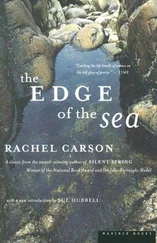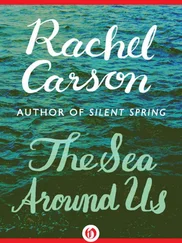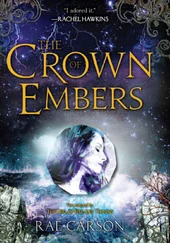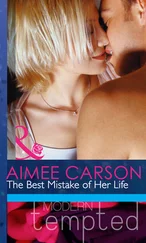Crawford’s posthumous publication, The Psychic Structures at the Goligher Circle , is comprehensively illustrated. There are many photographs of stockings, the fabric of some showing signs of being ruffled and distended, as though severely mauled by the transit of the psychic matter through the extremely narrow passageway between boot and stocking, thought Crawford. It was well known that photography would show up faint processes invisible to the naked eye, and enable minute comparisons to be made, he said. Photographs of imprints made by real stockings in clay were compared to those made by psychic simulacra of stockings, and found to be remarkably similar. Enlarged, these impressions took on curiously abstract forms, as the white clay, like the surface of a moon, was dented, hollowed, dimpled, ribbed, and pitted by the fabric. Strangest of all is the series of twenty-six photographs which conclude the book. These purport to show the psychic structures extruded from the body of Kathleen Goligher. To a disinterested observer, however, the structures look like strips of white fabric — linen, perhaps, for the Golighers worked in the Belfast linen mills. Crawford has labelled the photographs, from A to Z, and provided explanatory captions, for example, ‘A plasmic column under the table, used when very powerful levitations are required’. For all the world it looks as if someone has tied a bandage to Kathleen Goligher’s ankle, and pinned the other end to the underside of the table. The other photographs, ‘Plasma collected near the feet of the medium forms into a lump and advances along the floor’, ‘Plasma inside the medium’s shoe’, and so on, are no more convincing. If anything, they are proof that Crawford was deceived by a cheap conjuring trick, the whole business quite literally fabricated.
And there is something deeply disconcerting about the photographs. As I tried in vain to see how they might be amenable to Crawford’s interpretations, it struck me that their atmosphere of pathological derangement lies in how they contravene the rules of portraiture. They show a female figure seated in a Windsor chair against a black backdrop, the upper half of her body draped with a black cloth. They are, presumably, photographs of Kathleen Goligher. But all except one have been taken in such a way as to exclude the sitter’s head. And that one has been cropped. A neat square has been cut out of the top left-hand corner, where Kathleen Goligher’s face should be, and I wondered if this was a form of vengeance. Elsewhere — in Crawford’s first book, The Reality of Psychic Phenomena — there are photographs which do show Kathleen’s Goligher’s face, notably the studio portrait used for the frontispiece. She is an attractive young girl of about seventeen. Her long hair, parted on the right, is tied at the back with a ribbon and draped in three ringlets to the left of the open neck of her sailor blouse. With her long nose, her full lips and the rather mysterious myopic gaze behind the rimless glasses, she bears more than a passing resemblance to the young W.B. Yeats, and I now recall that your phrase, In dreams begin responsibilities , is a quotation from Yeats. And I wonder how much that phrase says about the peculiar relationship between Crawford and Kathleen Goligher, five whole years during which she permitted herself, with the collusion of her family, to be examined forensically by him, or, to put it bluntly, to be groped by him. What on earth was going on?
The relationships of others are often unfathomable to us, Nina. I wonder if Crawford did love Kathleen Goligher, whether consciously or not, and if she somehow returned his love by keeping up the charade for those long years, wanting his dream to be a reality for him. Perhaps, attracted by Crawford’s picture of her as a gifted medium, she came to believe that she had indeed extraordinary powers, or was persuaded to think so by the other members of the Circle. If a reputable scientist, far above her in social status — for the Golighers were poorly paid textile workers — could believe in her, why could she not believe in herself? Or perhaps the whole thing was done for money, though there is no mention of money ever changing hands. And what happened at the end, what caused Crawford to kill himself? Who was responsible, in what dream did that responsibility begin? Did Kathleen Goligher, exhausted by the pretence, reveal her pretence to him, whether consciously or not? Did she tell him the truth out of love, or pity, or contempt? We shall never know.
I can still see the attic room of my dream that resembles the Goligher séance room, the bare boards with nail-heads glinting in them, and the faded blue striped wallpaper with faded pink roses on it, as photographed by Crawford, except Crawford’s photographs are black and white, and in any case I had this dream several times before I ever set eyes on Crawford’s books. I think the wallpaper was a throwback to that of my childhood bedroom. The chronology of such dreams is always confusing, for they repeat themselves with terrible familiarity, and the same motifs recur again and again as the long past resembles the immediate past. At other times, I would meet you in Warsaw. I would be walking in the Old Town, remembering how it had been razed by the Germans in the war, and was now a copy of the Old Town, painstakingly reconstructed from the rubble, from old photographs, architectural plans, and memories. I am in one of those streets that specialise in amber jewellery, and you are peering into a shop window, when you turn, and we see each other face to face. It’s been a long time, Nina, I would say, and you would say, No matter, Angel, the past is past, we’re living in this moment, now, come here and look, how beautiful these things are. And you would take my arm and, like children at a sweetshop window, we would feast our eyes on necklaces and earrings and pendants, and we would remark on the fantastic centrepiece, a great chunk of raw amber that had a millions-of-years-old butterfly imprisoned in its glowing candy-coloured depths. And we would be so engaged when suddenly there would be an almighty explosion, a shop at the end of the street would collapse under a column of smoke, and then the next shop would explode, and the next, and I would realise how implicated Belfast was with Warsaw, the whole row collapsing like dominoes, the series of explosions getting nearer, nearer, until, as we stood rooted to the ground, we were swept into oblivion, and I woke.
I look again at your postcard captioned, Sunlit interior of Grand Central Terminal, c. 1940 , and your message, In dreams begin responsibilities . When it arrived the day before yesterday it struck me that it was similar in style to your first postcard, that of the Empire State Building being struck by lightning. When I compared them, I now saw that both indeed had come from the same source. Both had the heading, New York Flashbacks , and both were copyright of the Underwood Photo Archives Ltd, San Francisco. Moreover, I now realised that they must have come from a booklet of postcards, for, when I looked at them more carefully, I could see that both had a serrated edge where they had parted company with their spine, leaving behind residual little blips of paper hardly perceptible to a recipient more concerned with the message than with such forensic details: both were leaves from the same book. And I pictured you flicking through the series, thinking of me, appropriating these two from a number unknown to me, but not entirely unimaginable, for I vaguely recalled seeing booklets like this in metropolitan bookshops, of some two dozen or thirty postcards, and black-and-white photographs titled The Statue of Liberty, Times Square , and Ice-skating in Central Park flashed through my mind.
Читать дальше












